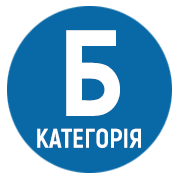DIGITAL INSTRUMENTS OF COMMUNICATION IN THE EDUCATIONAL PROCESS OF THE INSTITUTION OF HIGHER EDUCATION
DOI:
https://doi.org/10.25128/2415-3605.22.1.4Keywords:
digital technology, interactive learning, Padlet, collaboration, communicationAbstract
The organization of the educational process with the use of digital tools is a priority of a modern higher education institution. Such tools significantly increase the effectiveness of distance learning. Teachers must use a variety of digital tools to choose the most effective means, style and format of communication with students. Google Apps enables educators to integrate digital communication and collaboration technologies into their educational activities. Padlet is one of such innovative tools, which can be used for sharing information, images, audio or video files on virtual walls. The study outlines the use of an interactive Padlet board to support learning. The main advantages of this interactive resource are accessibility, multimedia, easiness, mobility, interactivity and creativity. Examples of possible options for using the interactive Padlet board in the organization of the educational process during the teaching of the discipline “MIT in the educational process” have been considered and given. These boards can be used to gather information, communicate, work together, solve problems, organize project activities. Interactive boards can be used at different stages of the lesson and for different purposes. Examples of using interactive boards before the lesson, for publishing tasks and guidelines for their implementation, for collaboration and communication, for presenting by students their own project results have been given.
References
Концепція розвитку цифрових компетентностей. 2021. URL: https://zakon.rada.gov.ua/laws/show/167-2021-%D1%80#n93
Морзе Н, Вембер В., Бойко М. Використання цифрових технологій для формувального оцінювання. Електронне наукове фахове видання. Відкрите освітнє е-середовище сучасного університету, 2019. С. 202–214.
Морзе Н., Базелюк О., Воротникова І., Дементієвська Н., Захар О., Нанаєва Т., Пасічник О., Чернікова Л. Опис цифрової компетентності педагогічного працівника (проект). Відкрите освітнє е-середовище сучасного університету. 2019. Спецвип. С. 1–53.
Хміль Н., Дяченко С. Соціальний сервіс Padlet як елемент педагогічної діяльності. Інформатика та інформаційні технології в навчальних закладах. 2014. № 2. С. 24–30.
DeWitt, D., Alias, N., Siraj, S., & Zakaria, A. R. Interactions in Online Forums: A Case Study among First Year Undergraduate Students. Frontiers in Education, 2, 2014, p. 6–13.
Digital Education Action Plan (2021–2027). (2020). URL: https://ec.europa.eu/education/education-inthe-eu/digital-education-action-plan_en
Greenstein, L. M. Assessing 21st Century Skills: A Guide to Evaluating Mastery and Authentic Learning. Corwin Press. 2012. 245 p.
Henseruk, H., Buyak, B., Kravets, V., Tereshchuk, H., Boiko, M. Digital transformation of the learning environment at university, Innovative Educational Technologies, Tools and Methods for E-learning University of Silesia in Katowice, Poland, 2020. Vol. 12. P. 325–335.
Kuit, J. A., & Fell, A. Web 2.0 to pedagogy 2.0: A social-constructivist approach to learning enhanced by technology. In Roisin, D., Jen, H., Kevin, O. (Eds.). Critical Design and Effective Tools for E-Learning in Higher Education: Theory into Practice, Hershey, New York, Information Science Reference, p. 310–325.
Mulligan, C., & Garofalo, R. A. Collaborative Writing Approach: Methodology and Student Assessment. The Language Teacher, 35, 2011, p. 5–10.
Redecker, C. European Framework for the Digital Competence of Educators: DigCompEdu. Punie, Y. (ed). EUR 28775 EN. Publications Offce of the European Union Luxembourg, 2017. 95 p.
Yaakop A. Analysis of Technology Acceptance Model in Understanding University Students’ Behavioural Intention to Use Web-based Interactive Learning Tools. 2015, p. 141–150.






